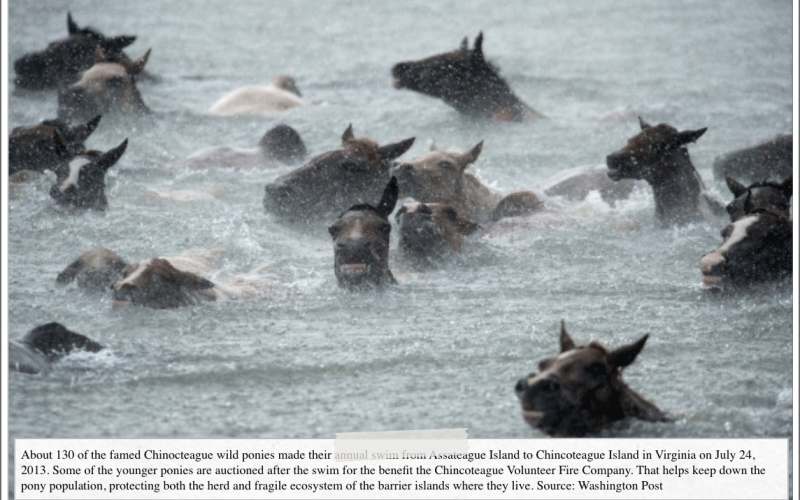by ConvergEx's Nick Colas,
What can the horse track tell us about human nature? A lot, as it turns out. One of the seminal works on the subject of “Sunk costs” revolves around a study done at a race track in British Columbia in the 1960s. The paper, cleverly titled “Postdecision Dissonance at Post Time” (Knox and Inkster, 1968), outlines the following experiments and conclusions:
The researchers interviewed 141 bettors at Exhibition Park Race Track in Vancouver. Sixty nine of the subjects were questioned less than 30 seconds before placing a bet, and 72 just a few seconds after placing their bet. The interviewees came from both the general population in attendance at the day’s races and more exclusive “Clubhouse” section of the viewing area.
Both groups were asked to score their chance of winning, on a scale of 1 (slight) to 7 (excellent). They were asked to ignore other inputs like the odds on the horse or what they might have heard from other bettors.
The subjects surveyed before they placed their bets averaged a score of 3.48 – essential a slightly better than “Fair” chance.
The subjects surveyed after they made their wager averaged a score of 4.81 – or well over the halfway point of the 1-7 score.
Knox and Inkster repeated the experiment at another track and the results were largely the same.
It seems that all it takes to become sure (or at least surer) about an outcome is to spend about 1 minute and $2 on a bet. That may not be rational, but it does appear to be human nature.
The broader term for the phenomenon described here is “Sunk cost analysis” and it is a staple of both economics and corporate finance theory. The basics are very simple: money or time you’ve already spent or invested is lost to you forever. Buy a stock for $100/share and see it disappoint on earnings? That $100 is irrelevant to any decision to sell your position, even if the stock is trading at $80 after the miss. Invest $1 million of your company’s capital in a new project, only to see it blow through every development deadline? Same thing – if it makes sense to shut it down, the $1 million is lost already. All this feels very counterintuitive for the same reasons that the Canadian betters got all brave once they had plonked down their $2: once we own something we have a tendency to think it is somehow special.
The most widely cited study on the topic is titled “The Psychology of Sunk Costs” by Arkes and Blumer (1985), and it summarizes the difficulty we all have on this issue with the following explanation:
“One reason why people may wish to throw good money after bad is that to stop investing would constitute an admission that the prior money was wasted.”
“Certainty has special properties in the human mind, and making decisions which carry a certain negative outcome are especially difficult.” That’s why admitting the prior decision to invest was wrong can be so difficult, since there is no turning away from that assessment once you mentally take the loss.
Arkes and Blumer even mention another race track survey, all the way from 1956, to highlight how irrationally humans consider the odds when they are already making losses. It turns out that racetracks typically see the most “Long shot” bets on the final race of the day. That’s when betters who have been losing try to win it all back with one big score. Which, statistically, is less likely to happen on a 100:1 shot.
Less well described in the literature, but equally important, is that “Sunk cost accounting” works both ways. Say you buy a stock at $100 and it goes quickly to $200. You want to sell some there, right? That’s the same mistake as the losing examples above. The truth is all you are buying with that decision is the chance to avoid some regret if things turn down. The stock doesn’t care where you bought it, and neither does the market.
Putting aside the investor psychology lessons for a moment, it occurs to me that the “Sunk cost” psychology we’ve outlined here is an important one when considering Federal Reserve policy as we await the Open Market Committee’s announcement at the end of their two day meeting this Wednesday. A few thoughts here:
The Fed’s bond buying programs – a.k.a. Quantitative Easing 1, 2 and 3 – have required a huge amount of investment. The total incremental size of the Fed balance sheet from pre-Financial Crisis to now is some $2.4 trillion. And it isn’t just the size of the program that matters – it is the fact that this program was relatively novel when the Fed launched it in 2008. Essentially, Federal Reserve policymakers have two levels of “Ownership” for this idea: both the capital invested and the intellectual imprimatur of doing something unorthodox.
As the Federal Reserve ponders how and when to reduce its bond buying it is quite vulnerable to the problems of assessing “Sunk costs”. They know they have spent trillions of dollars and a lot of Federal Reserve goodwill to adopt and persist with this expensive and unorthodox strategy.
But those are sunk costs, right? They should be. At the same time, can any organization really back away from such an important “Investment” and consider it “Sunk money”? The beginning of the Arkes & Blumer paper actually highlights the one arena where one can use the psychological errors of “Sunk cost” accounting to some benefit: politics. As it turns out, politicians will often make the argument that a given project needs further investment because so much has already gone into it. Even though the finished product isn’t necessary any more.
U.S. stock markets seem to understand this “Sunk cost” bind in which the Federal Reserve finds itself. It knows that even as the Fed “Tapers” the size of its monthly bond purchases, it probably will keep the program in place longer than most investors expect. After all, if it cuts back too much or too fast, all that prior “Sunk” investment will be wasted, right? And even if they claim to be able to fine-tune the amounts purchased, wouldn’t they lose some of their credibility if they zigged when the economy zagged? It is almost enough to make you feel a little sorry for the Fed.
Before we get too emotional, however, recall that the Federal Open Market Committee will likely know the Friday Jobs Number before they make their regular 2:15pm (ish) release. Most consensus estimates run from 175,000 to 190,000 for a headline/private sector Jobs Added number. If it does come in stronger, you can bet the Fed will tweak their Wednesday statement towards tapering. And if it is weaker, those warnings will be much more muted. Even with the “Sunk cost” issue hanging over their heads, the Federal Reserve isn’t “sunk” just yet.











